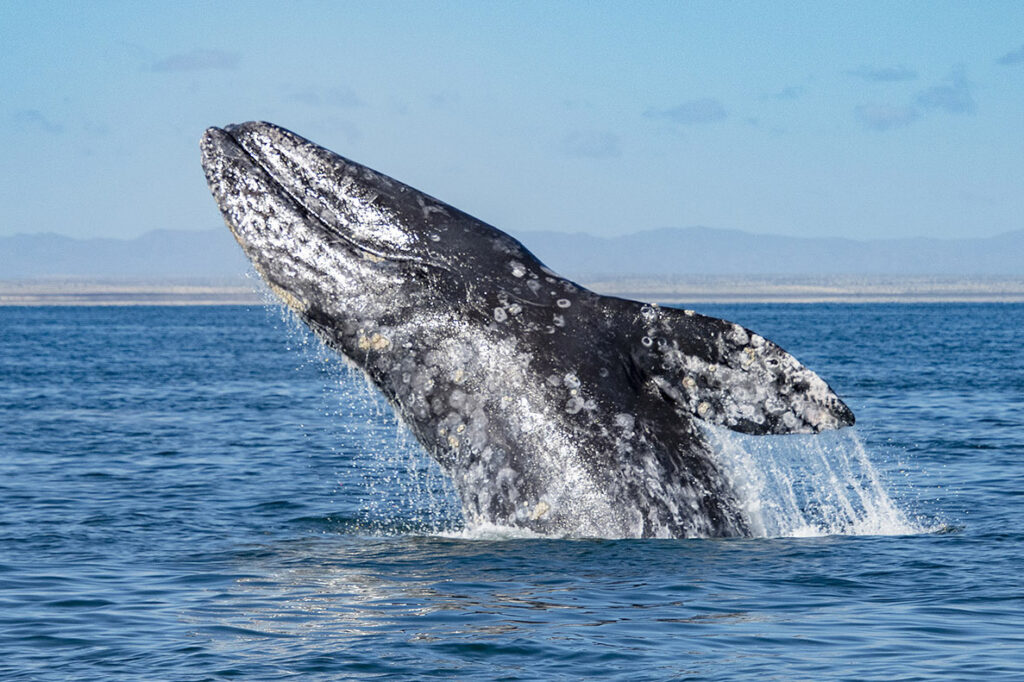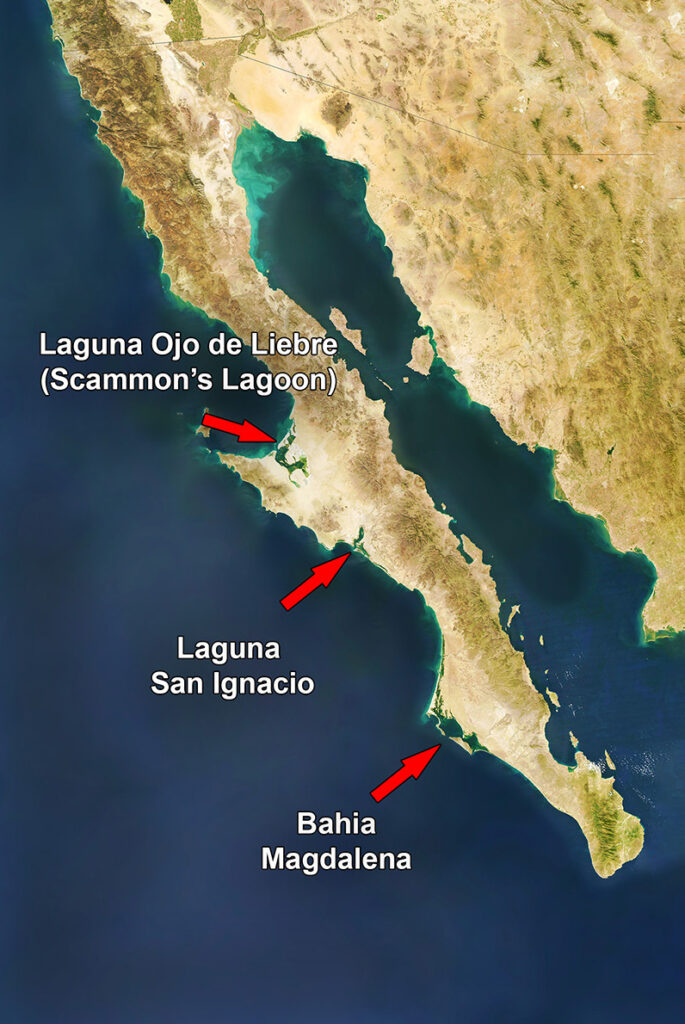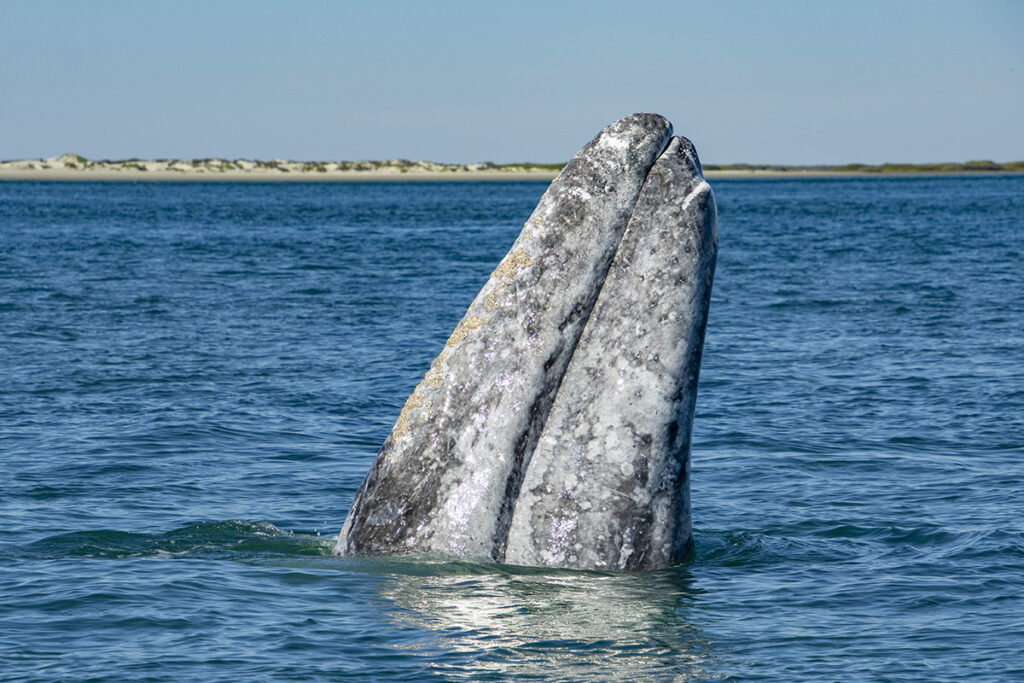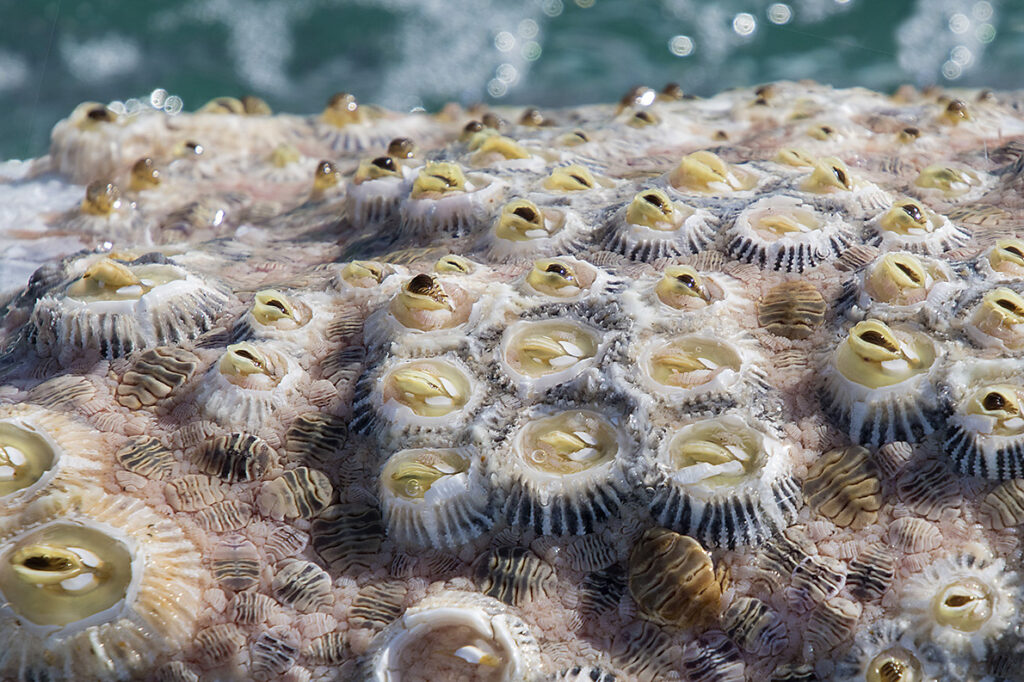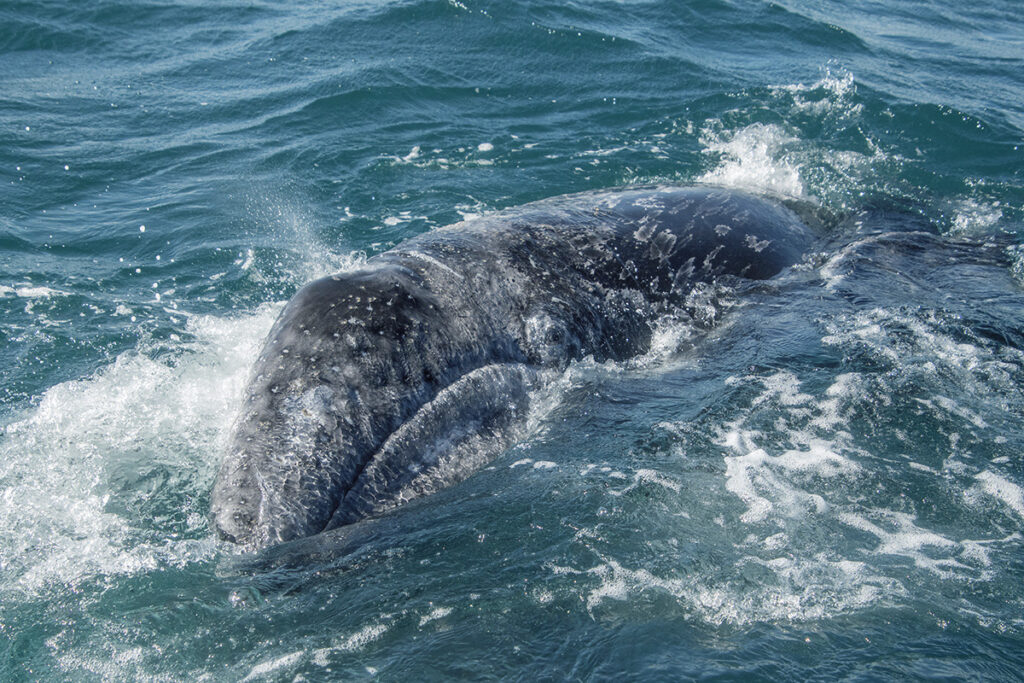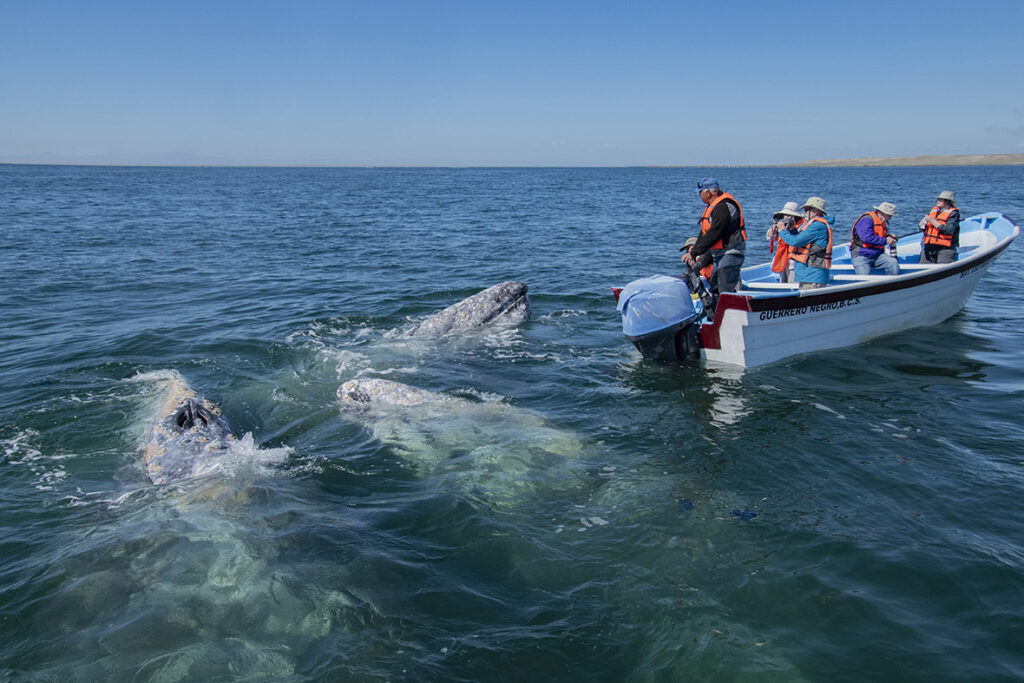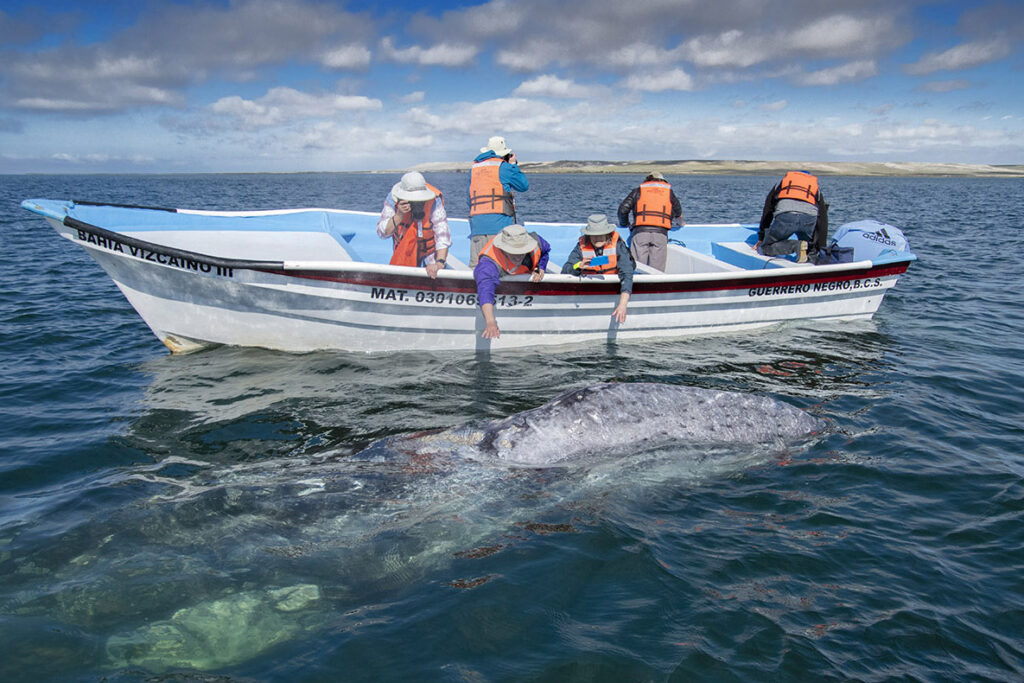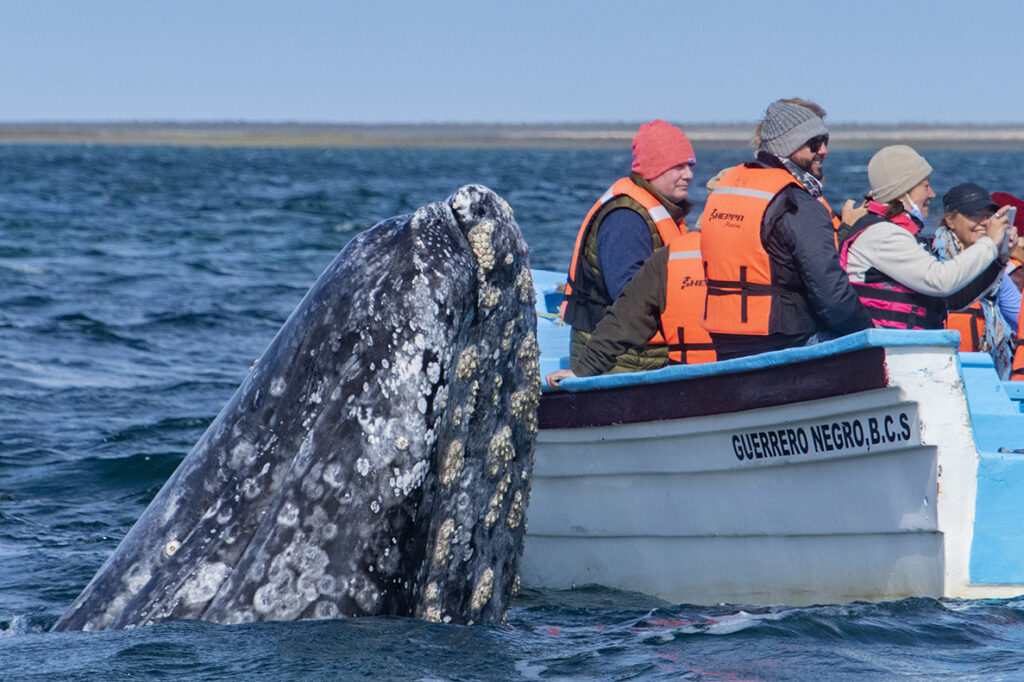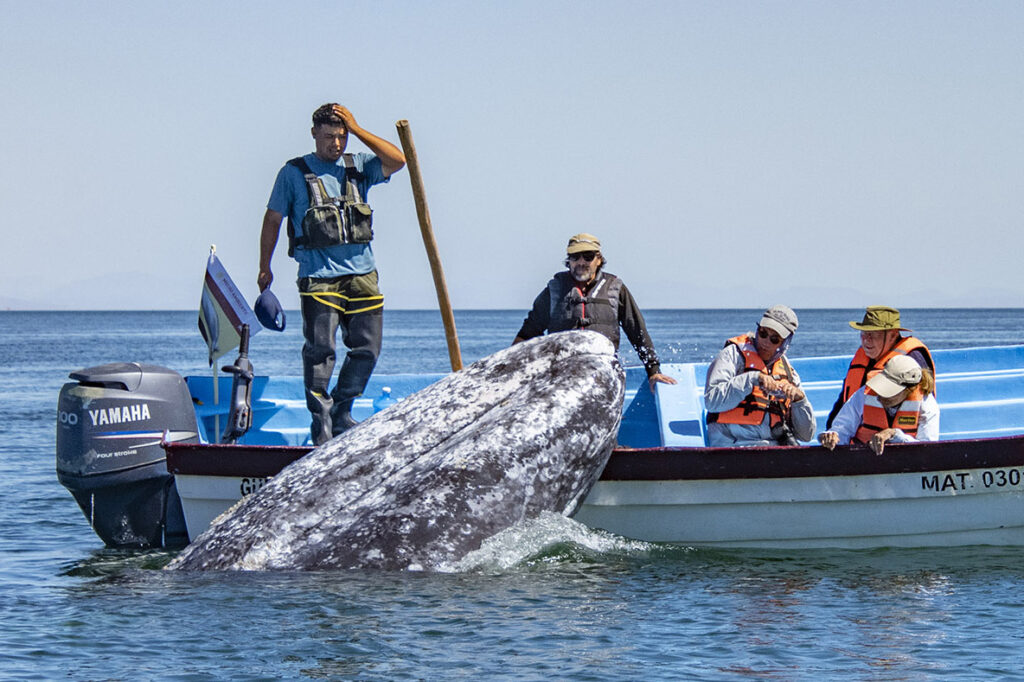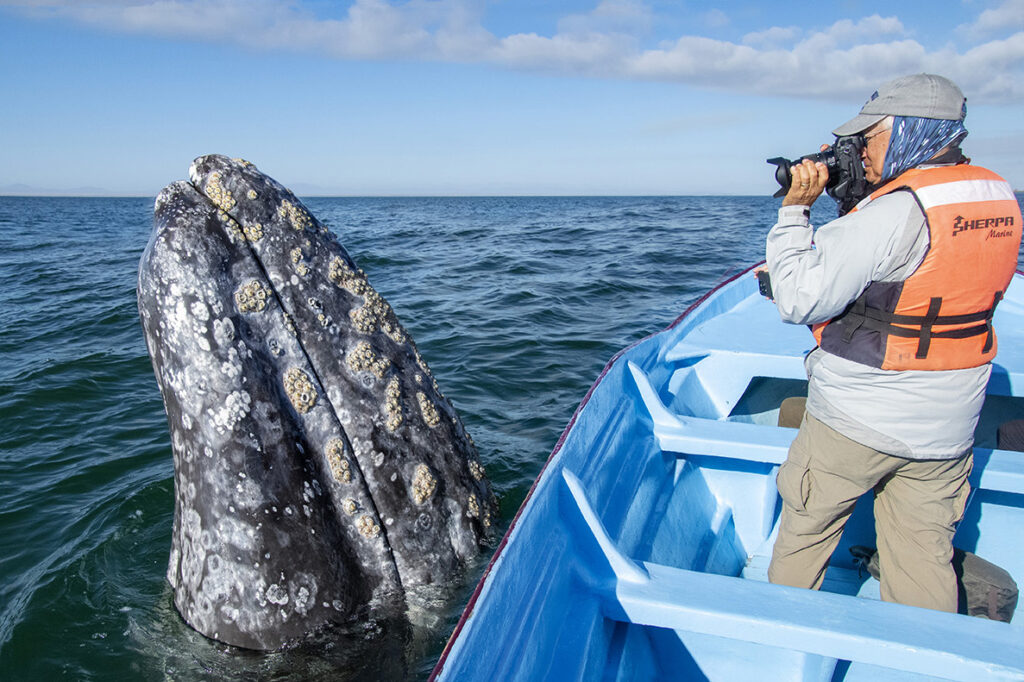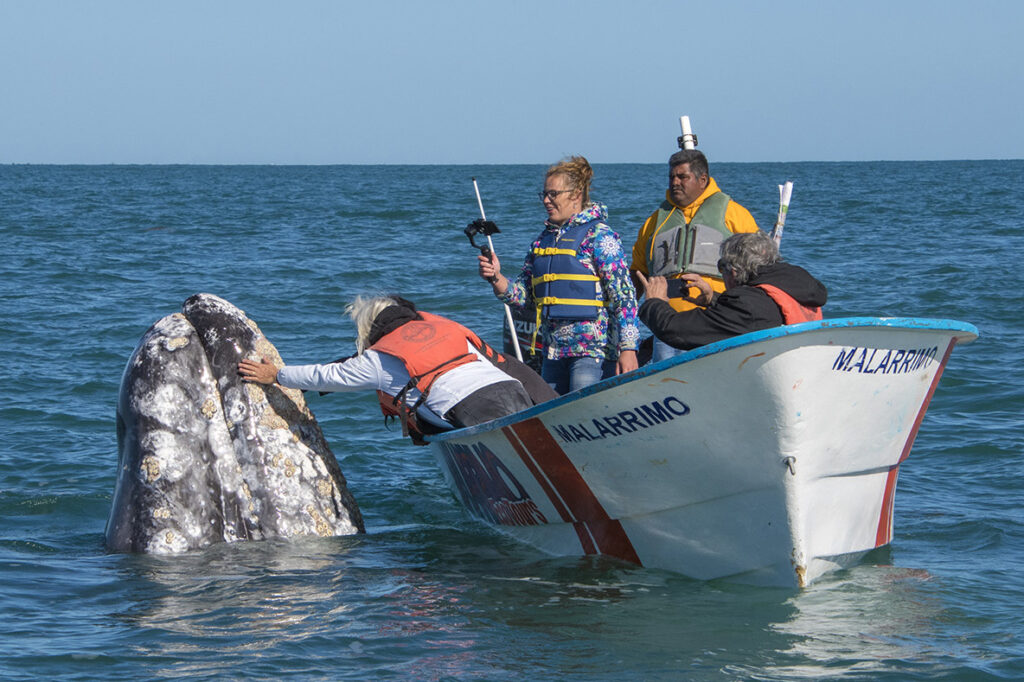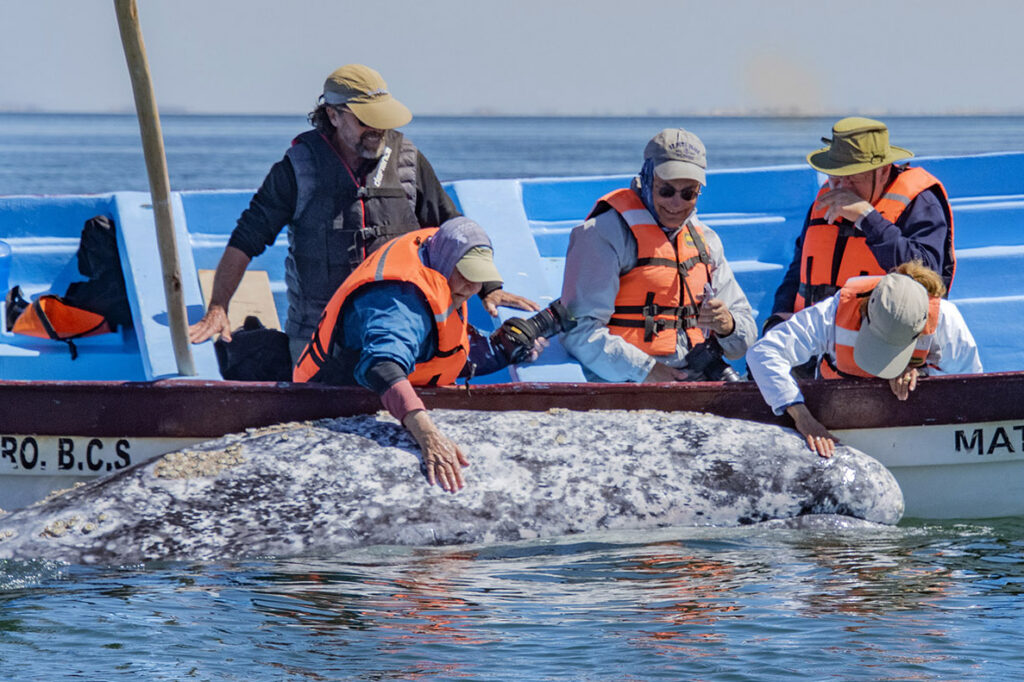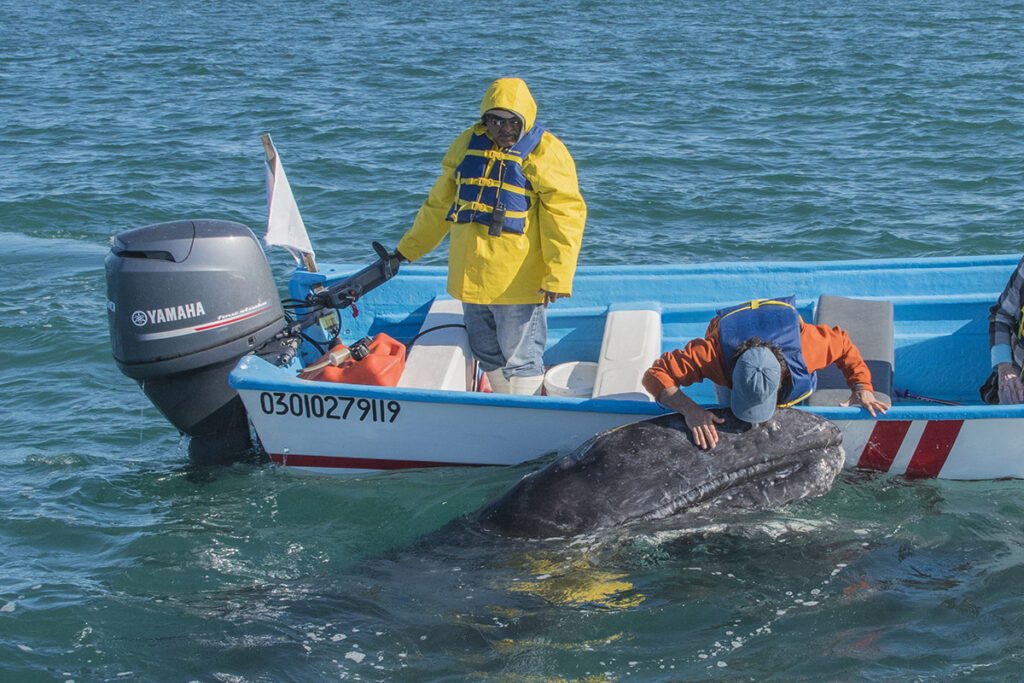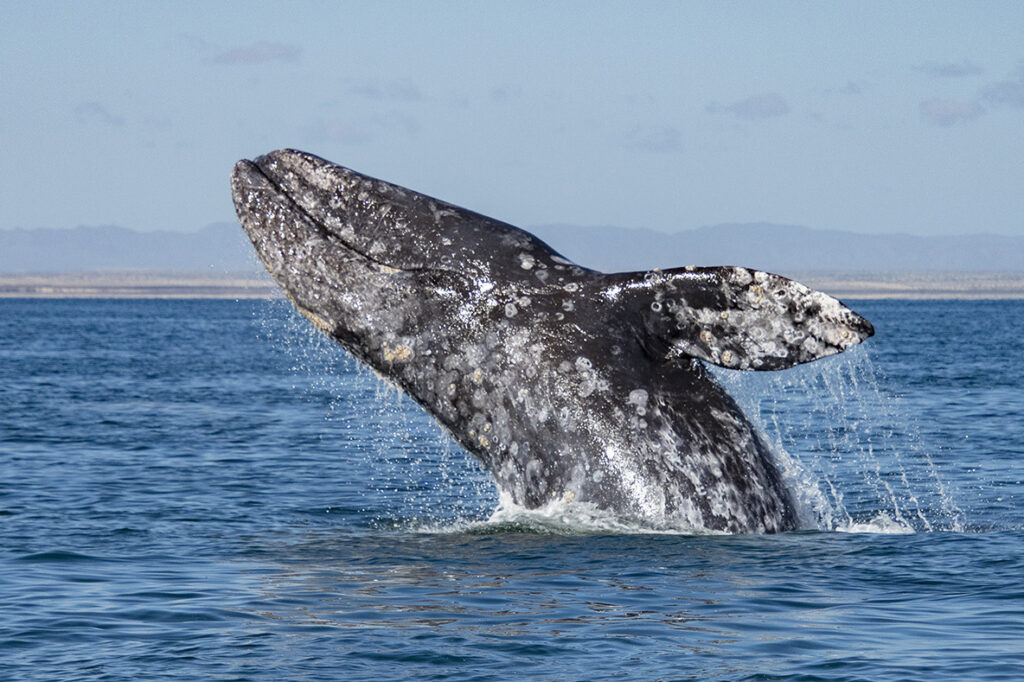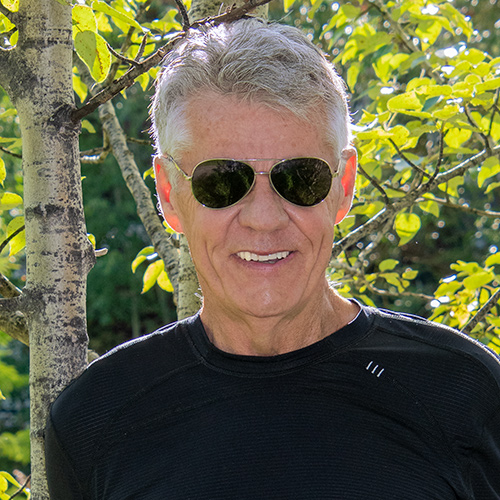In the mid-1800s, the legendary American whaling captain Charles Melville Scammon accidentally discovered the narrow opening to a large sheltered lagoon along the Pacific coast of Mexico’s Baja Peninsula. What Scammon didn’t initially realize was that the lagoon was the largest of three such protected lagoons that eastern gray whales had been using for millennia to mate and give birth to their calves in the winter months after having migrated thousands of kilometres from their summer feeding grounds in the Bering and Chukchi Seas of Alaska and eastern Russia. The chance discovery of “Scammon’s Lagoon”, later renamed Ojo de Liebre, ignited several decades of intense slaughter that nearly eliminated the eastern Pacific gray whale population.
The three Mexican lagoons used by wintering gray whales in the eastern Pacific.
In the right light conditions, the spout of a whale can create a beautiful rainbow.
The shadow of my small fishing boat, locally called a panga, shades the snout of a large adult gray whale surfacing beside us.
The whalers soon learned that an adult 40-ton gray whale, unlike many of the other great whales they targeted, did not immediately and predictably flee for its life when struck with an exploding harpoon. Instead, the impaled cetacean often turned on its attackers, ramming and smashing their boats, frequently injuring and killing the men. For this aggressive, defensive behavior the gray whale earned the nickname “devilfish”.
When a gray whale “spyhops”, it rises vertically in the water (the human equivalent of treading water) to inquisitively look around.
The gray whale has more external parasites than any other species of whale. The parasites consist of barnacles and four species of amphipods, all of which are commonly called “whale lice”.
A newborn gray whale calf is roughly 5 meters (16 ft.) long, and weighs approximately 800 kilograms (1,750 lbs).
Fast forward a century to the mid-1970s on a warm winter morning when one of these legendary “devilfish” unexplainably surfaced beside the small boat of a local fisherman named Pachico Mayoral. Initially, Pachico was terrified. When the whale lingered, the brave Mexican reached out and touched the animal on its snout. That tentative initial touch began a cultural tradition that 50 years later has hundreds of “friendly” gray whales approaching boats for nothing more than playful interaction and the opportunity to be touched by an incredulous, overjoyed human. This was the stimulus for the two photo tours I led in February 2022 to the azure waters of Mexico’s Baja Peninsula. After two years of social distancing and confinement it was my first trip out of Canada. On many of the outings we made to witness and photograph these legendary “friendlies”, we had whales rub the bottom of our boat, spin us slowly like a bathtub toy, playfully blow bubbles under our keel, and explosively spout in our faces. Being so anointed became a desirable rite of passage. On countless occasions we saw breaching, spy-hopping and mating behavior. In a number of instances we had as many as five adults all approaching our boat at the same time, each seemingly anxious for a human touch. Such an experience is difficult to imagine, and even more difficult to comprehend. One adult female we nicknamed Rosita spent over 30 minutes rolling beside our boat allowing everyone to stroke her snout and run their hand along the silky smoothness of the skin on the underside of her chin. In all our encounters it was the whales that chose to swim to us as we floated motionless on the ocean surface.
The milk of a mother gray whale contains 53% fat, and a calf drinks 200 liters (53 gal) every day, increasing in body weight by a kilogram (2.2 lbs) an hour.
Three subadult gray whales, each interested in interacting, approach a stationary boat.
An adult gray whale, stretching up to 15 meters (49 ft.) in length, and weighing as much as 41 metric tons (90,000 lbs), playfully nudges a whale-watching boat.
Has anyone seen a whale?
Oops. Careful you don’t flip the boat, something which has never happened.
Who would think you could successfully photograph a whale with a wide angle lens.
Gray whales seem to particularly enjoy being stroked along their jawline and on their snout.
Not surprisingly, they react if a tourist touches them near their blowhole or eyes.
Francisco Detrell, a Mexican friend of mine, playfully kisses an inquisitive whale calf.
When a whale leaps out of the water it is called a breach. A breaching whale typically clears the water at an angle of roughly 30 degrees to the surface, then turns to land on its back or side, or less commonly in a spectacular “belly flop”. For a 40-tonne whale to achieve such a feat, even just once, is a Herculean demonstration of power and effort. The reason why a whale would breach is still uncertain but one likely explanation is that the massive impact splash when they land is an honest acoustic signal by the leaper of its body size, health and vitality; information a whale might wish to convey to potential mates or rivals.
About the Author – Dr. Wayne Lynch
For more than 40 years, Dr. Wayne Lynch has been writing about and photographing the wildlands of the world from the stark beauty of the Arctic and Antarctic to the lush rainforests of the tropics. Today, he is one of Canada’s best-known and most widely published nature writers and wildlife photographers. His photo credits include hundreds of magazine covers, thousands of calendar shots, and tens of thousands of images published in over 80 countries. He is also the author/photographer of more than 45 books for children as well as over 20 highly acclaimed natural history books for adults including Windswept: A Passionate View of the Prairie Grasslands; Penguins of the World; Bears: Monarchs of the Northern Wilderness; A is for Arctic: Natural Wonders of a Polar World; Wild Birds Across the Prairies; Planet Arctic: Life at the Top of the World; The Great Northern Kingdom: Life in the Boreal Forest; Owls of the United States and Canada: A Complete Guide to their Biology and Behavior; Penguins: The World’s Coolest Birds; Galapagos: A Traveler’s Introduction; A Celebration of Prairie Birds; and Bears of the North: A Year Inside Their Worlds. In 2022, he released Wildlife of the Rockies for Kids, and Loons: Treasured Symbols of the North. His books have won multiple awards and have been described as “a magical combination of words and images.”
Dr. Lynch has observed and photographed wildlife in over 70 countries and is a Fellow of the internationally recognized Explorers Club, headquartered in New York City. A Fellow is someone who has actively participated in exploration or has substantially enlarged the scope of human knowledge through scientific achievements and published reports, books, and articles. In 1997, Dr. Lynch was elected as a Fellow to the Arctic Institute of North America in recognition of his contributions to the knowledge of polar and subpolar regions. And since 1996 his biography has been included in Canada’s Who’s Who.



